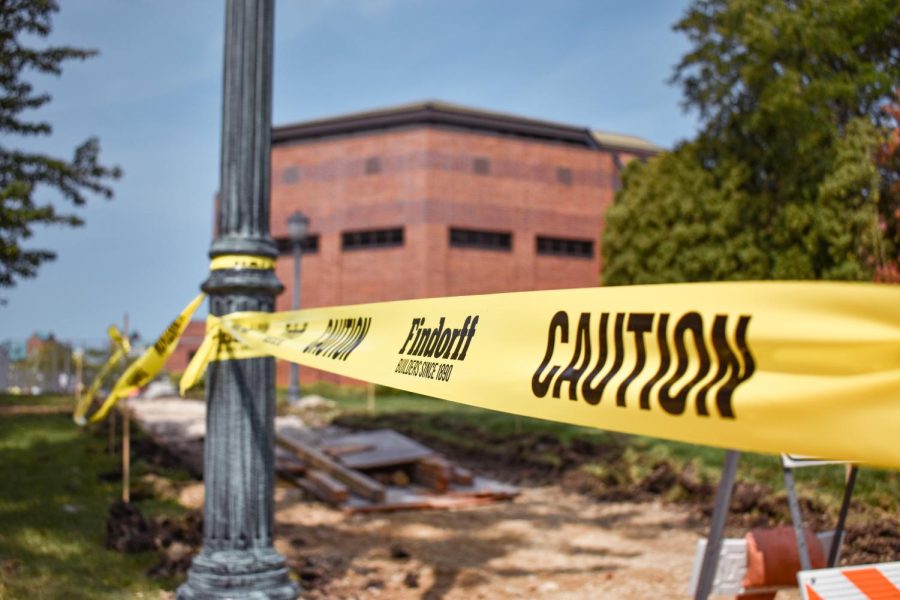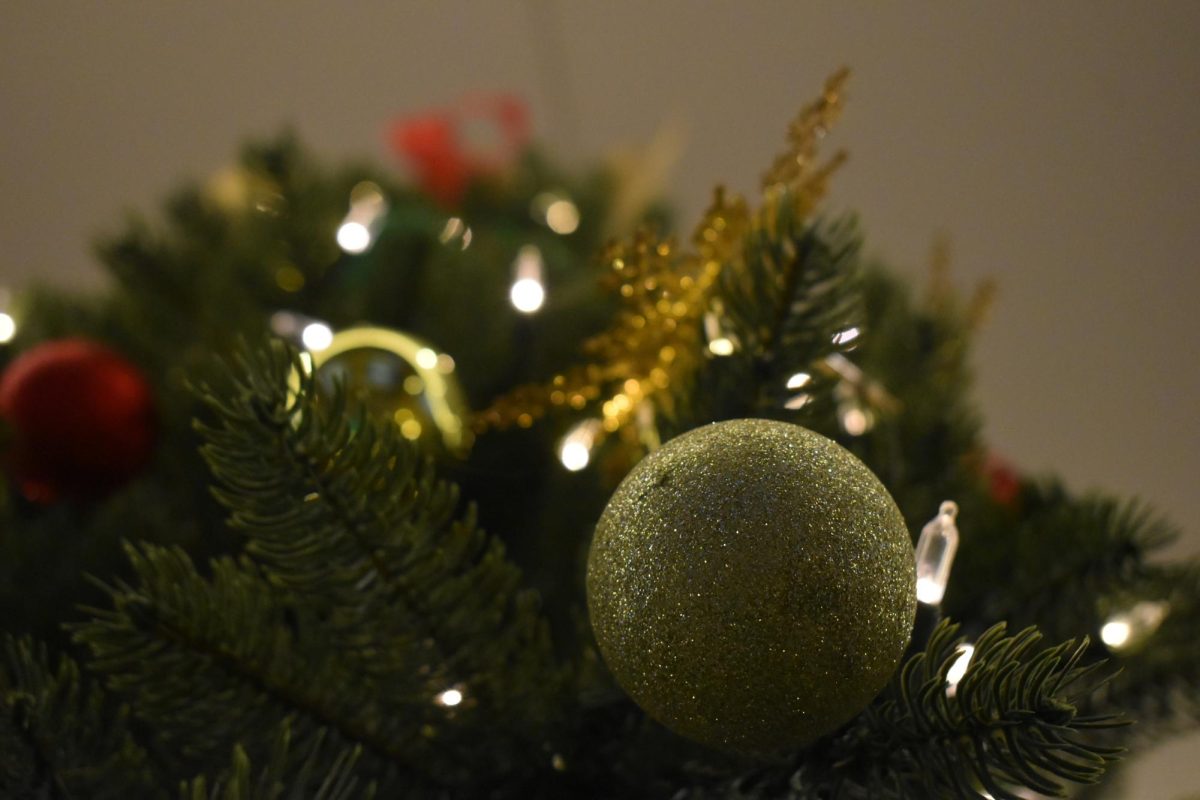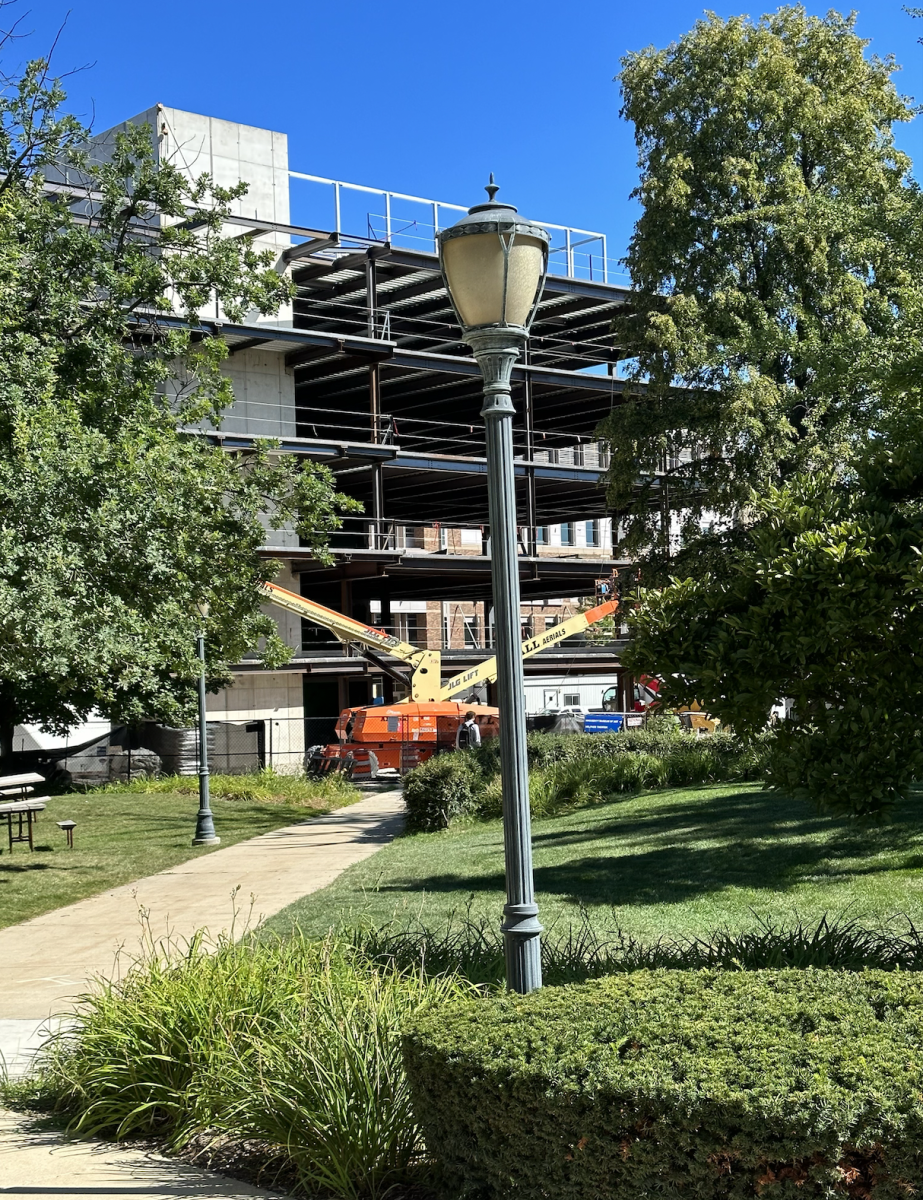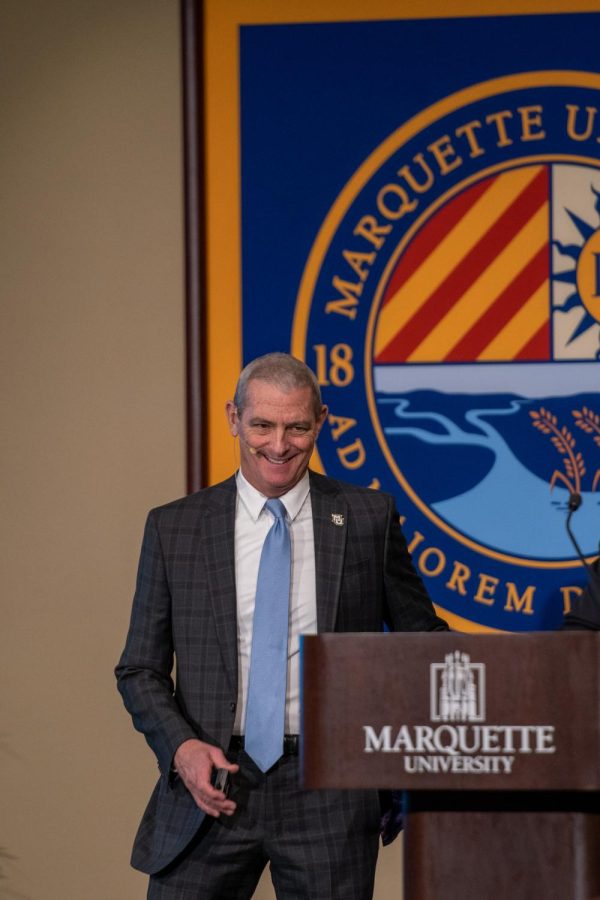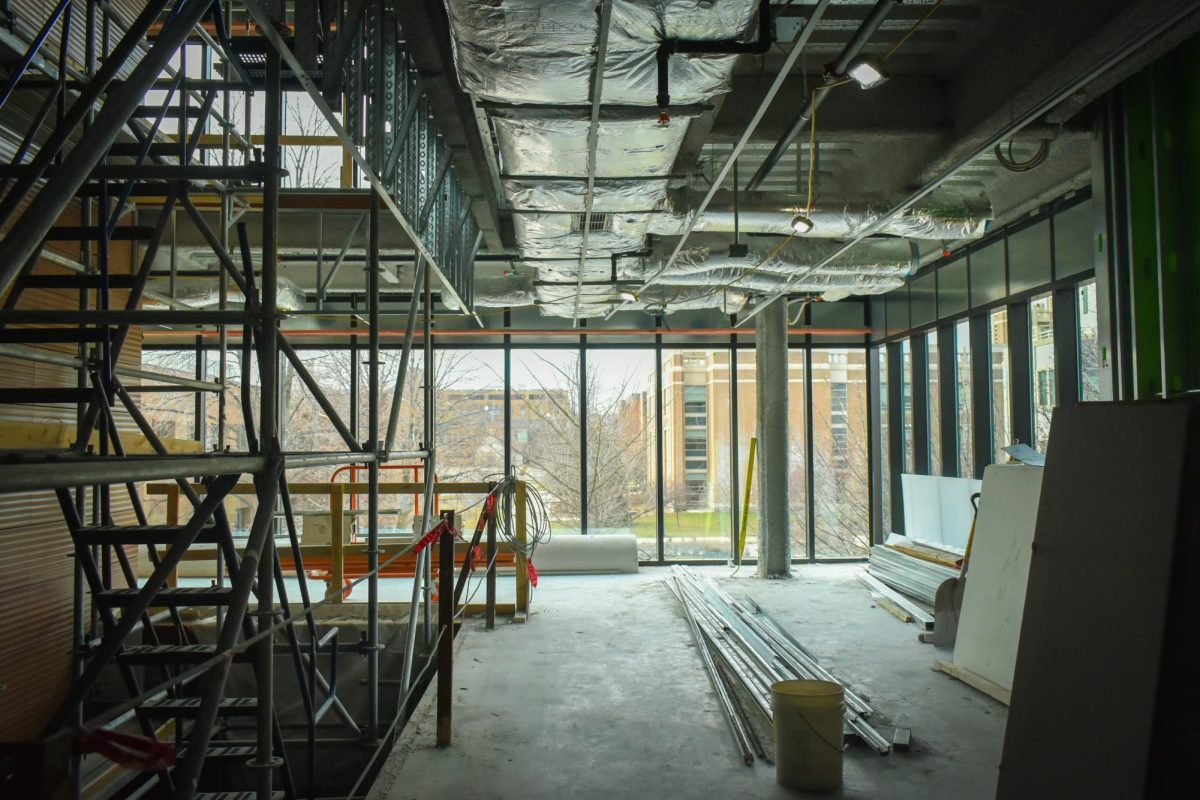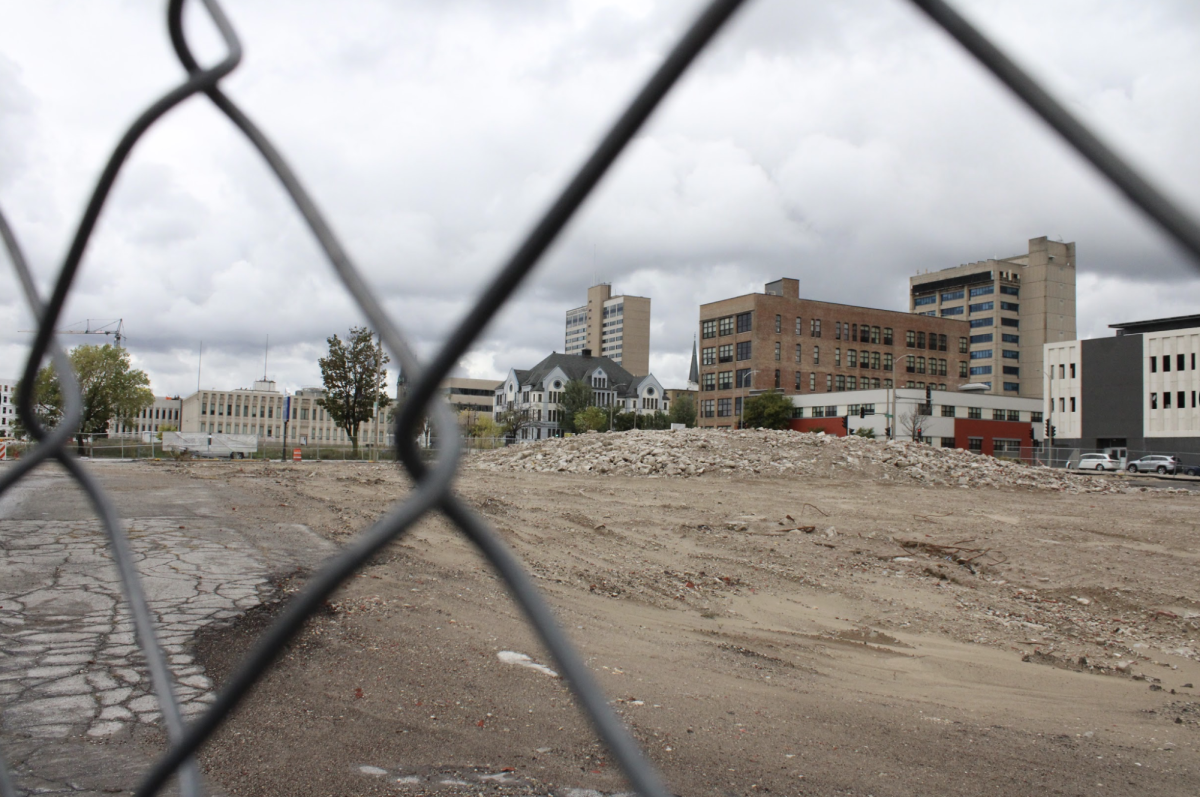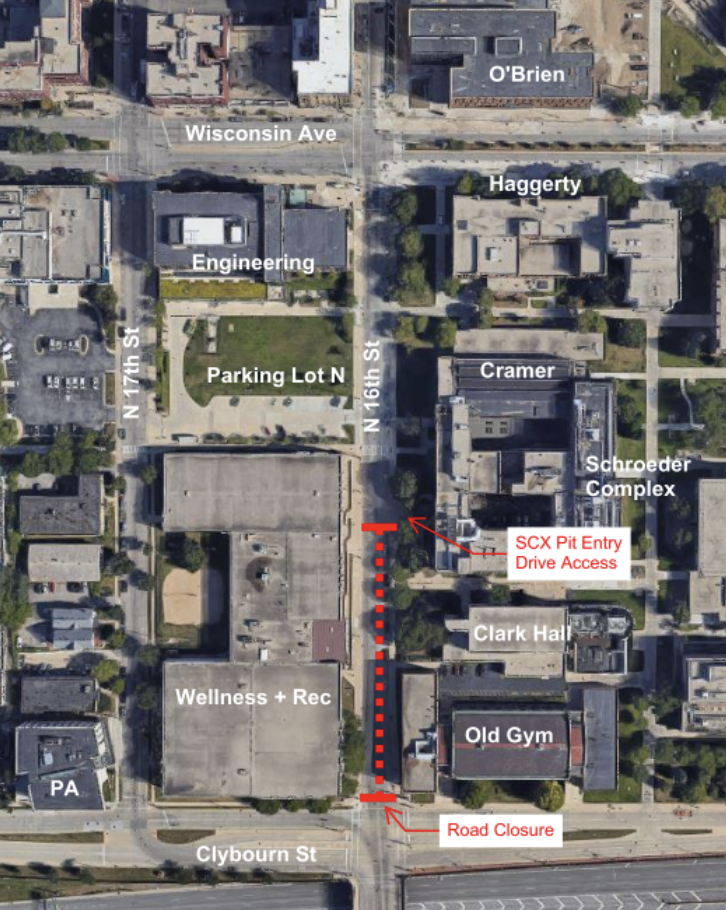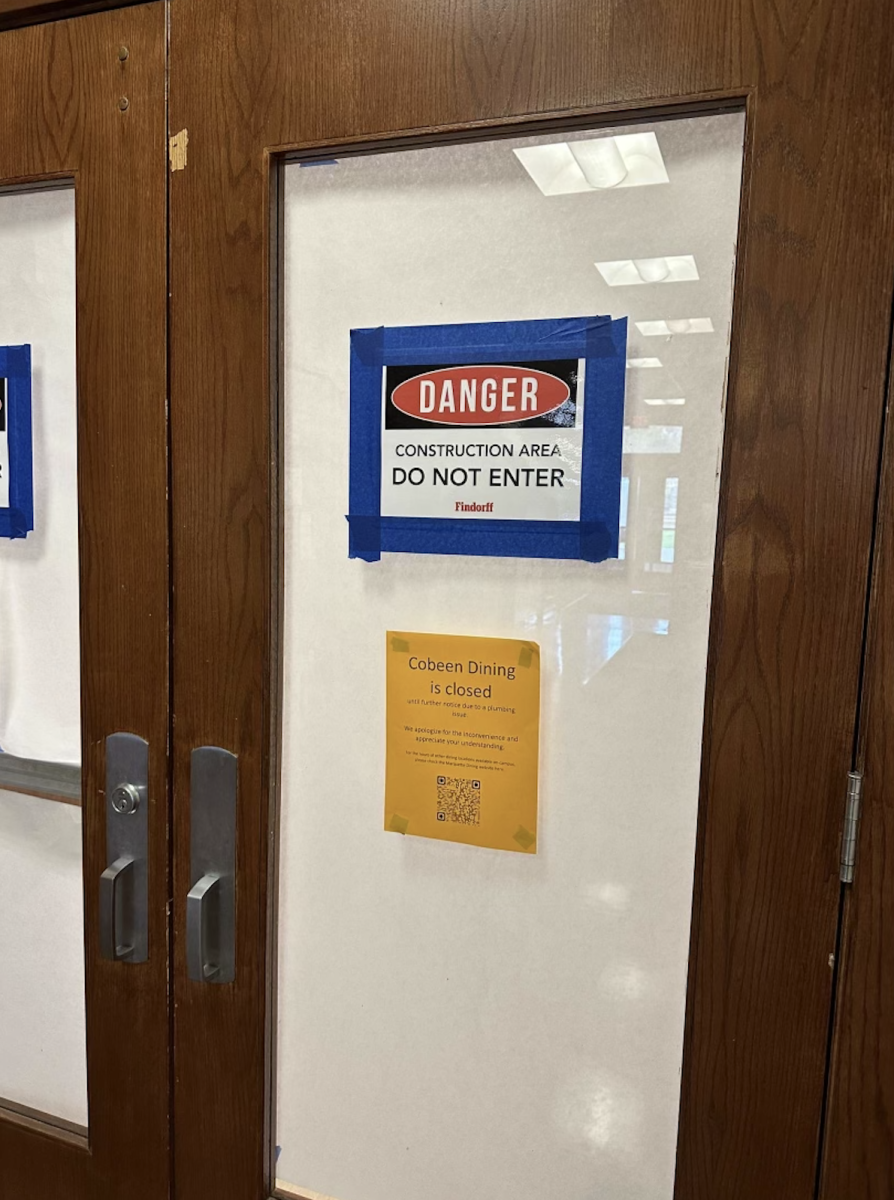Orange cones, poles and construction barrels tied together with yellow caution tape line campus sidewalks and crosswalks along Wisconsin Avenue. Curbs are missing in some spots, and in others, the sidewalks have been moved further into the street.
The construction is for the Milwaukee County Transit System’s latest project, a Bus Rapid Transit system, which is planned to be operational by June 2023. David Locher, MCTS manager of enhanced transit said BRT systems are employed in 182 cities around the world and 15 in the U.S.
“We start calling these things BRT stations. It’s all about this idea that bus rapid transit is light rail without the rail,” Locher said. “You have dedicated lanes painted in the roadway and instead of standard bus stops or a platform for a rail or building up a platform, it’s an elevated curve. It’s going to look very much like a streetcar platform.”
Traffic will be consolidated to one lane along the nine-mile BRT route that goes east-west, back and forth from the Watertown Plank Park & Ride in the west to North Cass Street in the east. Locher said that this will help “combat the reckless driving epidemic” plaguing Milwaukee, which killed 43 people last year and 70 people in 2020, and improve overall traffic flow. There will also be a bus lane and another lane that contains both parking and the bus stop “bulb-outs.”
“A bus bulb-out occupies that parking lane, so that if you’re in the rightmost driving lane, the bus just pulls up and [doesn’t] have to navigate in and out of that parking lane,” Locher said. “This allows us to basically take those same bus stops and shave off a couple feet so that a few parking spaces can still be preserved.”
In addition to the buses not having to pull over, the platforms will also save time commuting, up to nine minutes less, by eliminating the bus fare interaction that each passenger has with the bus driver when they board.
“Each station [is] going to have a ticket vending machine. You know you have cash and you only have cash on hand, this is a way to obtain your fare before the bus arrives,” Locher said. “If you’re more inclined to pay through an app or through a card, we also have a pull validator.”
Rather than the buses “kneeling” with their self-deflating bellows as they do now, the bus stops will also be elevated platforms to avoid that deflating step in the process as well.
The city’s current fleet of 350 clean diesel buses will receive 11 more for the BRT system, nine of which will be used on a regular basis and two used for spares. The new buses will be all electric, called the Nova Bus LFSe+. They will run 13-hour shifts and will get a quick recharge every two hours at Watertown Plank Park & Ride where there will be a short layover.
The BRT project was made possible by a 2021 federal bill.
“Dating back to 2016, the pool of funds was a lot smaller, so [nationally] we were actually competing for about the same pool of about $10 billion, but now that infrastructure bill came through in 2021, it has pushed that up to $23 billion,” Locher said.
Locher said $40.9 million of the project’s total of $55.05 million comes from federal funding through the Capital Investments Grant Program, which is managed by the Federal Trade Administration.
With all of the construction can come a disruption to campus life, which not all students are fond of at the moment, but realize that it might be worth it long term.
“Some of the construction has interrupted my pathway where I cross the street but in the end I feel like it will be worth it and nice to have new roads,” Catherine McMahon, a first-year physical therapy student, said. “I think that the benefit will outweigh the disruption.”
Tai Rush, a first-year in the College of Arts & Sciences, said the biggest traffic headache is with construction barrels, cars and pedestrians scattered in the intersections.
“We got yelled at because it was crazy. People don’t know how to turn, we don’t know where to walk. It disrupted me a little bit, but I’m happy to see how it turns out,” Rush said. “I know there used to be a bus stop right there [in front of the new business school building], and that used to be an easy commute to get around campus. But now we get dropped off blocks away.”
Locher understands where the students are coming from.
“Nobody likes being in the mess of construction. But you know what? You get through one season of construction and then it’s going to last the next forty years,” he said. “We’re going to leave it in a much better spot than when we arrived.”
The construction for the new business school building will prevent the bus stop near 16th Street and Wisconsin Avenue from being operational for a few months, Locher said, but the other bus stops are ready to be used as the concrete was poured just in time for Briggs and Al’s Run and Walk on Saturday.
Marquette’s campus is part of the ideal route not just for runs, but for the BRT system as well.
“The East West Corridor mirrors East West 94, so it’s a very busy traffic corridor in the first place, but from a transit corridor, you have all these exciting touch points pulsating through the middle,” Locher said. “We saw this as a way of taking what’s already our most robust sectional service in the corridor and laying these amenities to it so that folks can get to those jobs, places of learning and medical facilities quicker.”
Transportation will also become more efficient with the consolidation of bus lines.
“You have the 14, blue line, 30 and gold line, that’s four routes, all within the Marquette campus corridor, we’re going to consolidate them down to BRT and 30,” Locher said. “BRT is not an additional route, it’s going to take over and replace the busiest portion of the gold line.”
Traffic is expected to return to its normal two-lane flow in November, but will be consolidated to its future of one lane for automobiles, one lane for buses and one lane for the platforms and parking in the spring of 2023.
The outcome, “will be making up for [the inconvenience], though,” Rush said.
This story was written by Timothy Littau. He can be reached at [email protected]

